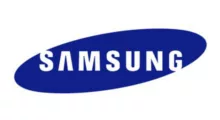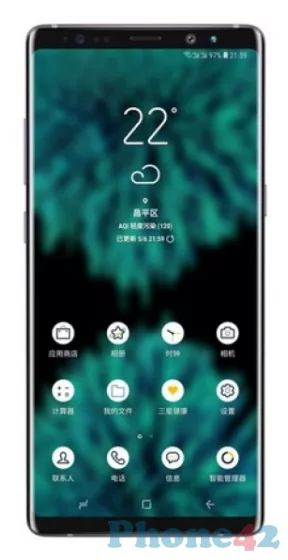
Samsung Galaxy Note9 SD (2018)
This phone comes equipped with a 6.4 inch Super AMOLED display, a Qualcomm Snapdragon 845 chipset, and 6 GB of RAM.
But hold on, there's another layer to explore.
Table of Contents
- Samsung Galaxy Note9 SD specifications
- Weight, dimensions, colors
- System, chipset, performance
- Display type, size, resolution
- Memory, storage
- Cameras, flash
- Connectivity, network, wireless
- Battery type, capacity, charger
- Features, sensors, specials
- Verdict, pros and cons
This article shares our personal experiences and thoughts about using the Samsung Galaxy Note9 SD smartphone. We hope to offer helpful insights to others interested in this device.

Samsung Galaxy Note9 SD specifications
| Brand | Samsung |
|---|---|
| Name | Galaxy Note9 SD |
| Model | NOTE9SD |
| Release date | 2018 |
Weight, dimensions, colors
| Colors | black, blue, brown, lilac, purple, silver |
|---|---|
| SIM type | Nano SIM |
Smartphones use a Nano SIM as a small chipcard for a subscriber identity module (SIM).
System, chipset, performance
| OS version | Android OS v8.1 (Oreo) |
|---|---|
| SoC | Qualcomm Snapdragon 845 |
| CPU | Octa-core, Quad-core 2.8 GHz Kryo, Quad-core 1.8 GHz Kryo |
| GPU | Adreno 630 |
The Samsung Galaxy Note9 SD comes with Android OS v8.1 (Oreo) out of the box. Google has integrated many services with Android. These include Google Maps, Gmail, and Google Drive. An advanced scheduler manages this octa-core CPU. It assigns tasks to the CPU for real-time speed and power efficiency. Qualcomm's Snapdragon processors work with Adreno GPUs. The processors are designed for the GPUs.
Display type, size, resolution
| Display type | Super AMOLED |
|---|---|
| Screen size | 6.4 inch |
| Resolution | 1440 x 2960 px |
| Multitouch support | yes |
AMOLED displays enable an Always-On Display feature. A part of the screen remains active to display the time, date, and notifications. The 6.4 inch display should be big enough for our needs. It will make viewing comfortable. This is true whether we're reading, browsing, or watching. The size of the screen is measured diagonally, from corner to corner.
Memory, storage
| RAM | 6 GB |
|---|---|
| Internal storage | 64 GB |
| Memory card slot | microSD |
The Samsung Galaxy Note9 SD comes with 6 GB of RAM, which is considered to be sufficient for most users' needs. Having more RAM alone does not guarantee better performance. 64 GB of storage is usually seen as good for a smartphone. It should be enough for most users. We can expand the internal storage (64 GB) with a compatible microSD card.
Cameras, flash
| Main camera | 12 + 12 MP, 4032 x 3024 px, autofocus, optical image stabilization |
|---|---|
| Flash | Dual LED |
| Selfie camera | 8 MP |
Multiple cameras or depth sensors can help the smartphone. They can make its portrait mode effects more appealing. The main camera of Galaxy Note9 SD has optical image stabilization (OIS). It counters camera shake.
Connectivity, network, wireless
| GSM 2G bands | 850 / 900 / 1800 / 1900 |
|---|---|
| Network coverage | 2G / 3G / 4G |
| Wi-Fi | Wi-Fi 802.11 a/b/g/n/ac |
| Bluetooth | v5.0, A2DP |
| GPS | A-GPS, GLONASS |
| NFC | yes |
| FM radio | yes |
| USB | USB Type-C |
| Headphone | 3.5 mm jack |
The Samsung Galaxy Note9 SD supports 4G/LTE networks. The phone is capable of connecting to Wi-Fi networks. The Galaxy Note9 SD smartphone is capable of connecting to Bluetooth devices. The GPS allows this smartphone to find their exact location. It provides accurate navigation and mapping. This phone is NFC (Near Field Communication) capable. The 3.5 mm headphone jack allows us to connect wired headphones or earphones to the device.
Battery type, capacity, charger
| Type | Li-Po 3850 mAh, non-removable |
|---|
The Li-Po 3850 mAh, non-removable battery gives the smartphone a good battery backup. The lithium polymer (Li-Po) battery is a light-weight, rechargeable battery. The battery of Galaxy Note9 SD isn't removable without voiding the warranty.
Features, sensors, specials
| Sensors | accelerometer, barometer, compass, fingerprint, gyroscope, hall, heart rate, iris sensor, light, proximity |
|---|---|
| Specials | Corning Gorilla Glass 5, Dual SIM, Fast charging, Wireless charging |
Today, smartphones come with many sensors. They help make the user experience better. The accelerometer provides information about the smartphone's movement in three axes. These are X (horizontal), Y (vertical), and Z (depth). The Galaxy Note9 SD phone has a fingerprint scanner. The light sensor detects the level of light in the environment. Dual SIM is great for businesses. They want to give staff a device with separate numbers and bills for personal and business use.
The fast charging technology comes in handy when we need quick juice on our device. Wireless charging uses an electromagnetic field. It transfers energy between two objects through electromagnetic induction. Gorilla Glass is very scratch resistant. It reduces the likelihood of everyday scratches and abrasions.
Verdict, pros and cons
Every phone has its strengths and weaknesses, and this Samsung phone is no exception. As with any device, there are aspects that shine and others that fall short. By examining both sides, we can paint a complete picture of what this phone has to offer. Let's explore its standout features and areas for improvement. Remember, this is just my opinion, and yours might be different.
Pros
- Super AMOLED display
- appropriate screen size
- adequate memory
- microSD slot
- multicamera setup
- optical image stabilization (OIS)
- Dual SIM support
- wireless charging
- Corning Gorilla Glass shield
Cons
- no 5G support
- low-capacity battery
Please let us know if you find incorrect information or something isn't working. Also, tell us if you have a suggestion for improvement.
 I'm Lucas Bradley, the founder of the Phone42.com site. I love technology, especially smartphones, and I've been working with tech stuff for more than 20 years. This means I've seen a lot of changes and have learned a bunch about what makes a good phone. On Phone42.com, I look at all kinds of phones. They can be from big, well-known companies or new ones trying to make their mark. I want to help people understand what's new and cool in the world of smartphones, in a way that's easy to get.
I'm Lucas Bradley, the founder of the Phone42.com site. I love technology, especially smartphones, and I've been working with tech stuff for more than 20 years. This means I've seen a lot of changes and have learned a bunch about what makes a good phone. On Phone42.com, I look at all kinds of phones. They can be from big, well-known companies or new ones trying to make their mark. I want to help people understand what's new and cool in the world of smartphones, in a way that's easy to get.